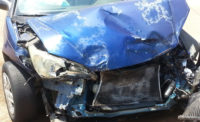As the US construction industry progresses into a new financial year, the focus on health and safety has never been more critical. With safety directors striving to maximize their budgets, it's essential to understand the economic impact of safety measures, an area where recent research initiatives offer valuable insights.
Innovative safety investments: a new perspective
The US construction market is rich with innovative software and hardware solutions designed to enhance safety systems, offering operational and financial benefits. However, the adoption of these innovations often requires a demonstrable financial return, a challenge that a groundbreaking new project aims to address by bringing together academic and practitioner expertise.
Brad MacLean, founding Chair of the Construction Safety Research Alliance (CSRA), in collaboration with Nathalie Moyen, a finance professor at the University of Colorado's Leeds School of Business, are two leaders for a CRSA team that is developing applied research to more effectively determine the the return on investment (ROI) for safety measures. This project seeks to bring a disciplined, data-driven approach to safety in construction, an industry traditionally reliant on judgment calls, flawed cost-justification methodologies and situational assessments with opaque returns on investment.
Their research aims to establish a clear economic argument for safety interventions, considering both short and long-term impacts, and correlating them with concrete economic values. This is crucial for building a compelling data-based business case for safety innovations in the construction industry, helping health and safety directors to get buy-in at board level.
The project is undertaking four key steps to assess this value: firstly, identifying single safety interventions, secondly assessing immediate or short-term impacts, then connecting these impacts with long-term consequences and finally relating these to firm value.
The approach is transformational and moves from a tactical approach to a strategic approach, with decisions that are based on discrete ROIs for interventions, aligned with wider business growth strategy.
The risks to your firm
Reflecting on safety data, including accidents and near-misses, is a regular practice that highlights the dual risks — reputational and financial — that construction firms face. The high-risk nature of construction work, characterized by activities such as working at height, in challenging lighting conditions, or with hazardous materials, makes safety a top priority, both morally and financially.
As we’re well aware, the repercussions of safety lapses are substantial. Incidents can lead to Occupational Safety and Health Administration (OSHA) fines, legal actions from injured workers, equipment replacement costs, and the loss of contracts, to name just a few direct consequences.
Additionally, in the current tight labor market, the impact on employee morale and employer brand can't be overlooked. The workforce has changed dramatically in recent years — health and safety is now at the forefront of any construction job, no matter how menial. The health and safety of a worker is a given, not a nice to have — and rightly so.
Construction firms are well versed in health and safety measures and what they need to do and why. However, there needs to be more recognition around the economic value of safety interventions. More needs to be done to ensure these solutions are welcomed at all levels of seniority and job function.
While people safety is paramount, safety lapses can have far-reaching effects on a company's operational efficiency and long-term profitability. Frequent accidents can disrupt project timelines, leading to delayed deliveries and strained client relationships. This not only affects current contracts but can also hamper the ability to secure future ones, as clients increasingly prioritize safety performance when selecting partners.
Protecting your brand
In today’s environment, where employee wellbeing and corporate responsibility are increasingly under public scrutiny, the safety culture of a company has become more crucial than ever. Companies known for high safety standards are not only viewed more favorably in terms of brand perception, but they also tend to attract better talent and retain employees longer. And talent attraction is vital for any industry but particularly for the construction sector given the key challenges it faces.
For example, the sector is increasingly adopting new technologies like Building Information Modeling (BIM), drones, and automated machinery. This technological shift requires a new skill set, and attracting talent capable of working with these advancements is crucial for companies to stay competitive and innovative.
Younger, more technologically adept workers can also contribute to improved safety and efficiency on construction sites. They bring fresh perspectives and are often more receptive to new safety protocols and technologies that can reduce accidents and increase efficiency.
Although the role of advanced technology in enhancing workplace safety is also becoming more pronounced, construction firms need to recognize their potential to make their jobs easier and safer. For instance, the integration of tools such as artificial intelligence (AI) for risk assessment, wearables for monitoring worker health and safety, and software for incident tracking and reporting are examples of how technology is not just supporting but playing a meaningful role in the creation of safer work environments.
Effective safety interventions
In the US, safety interventions were historically about compliance. Now the focus is on efficiency and risk management as more complex projects have created demand for safety improvements and, today, technology must deliver much more value. Tools, whether they’re hardware or software, help with not just safety but operations more broadly to enable contractors to proactively manage risk and spend less time on all site paperwork, which helps to improve employee productivity and project efficiency.
Digital safety platforms, for instance, streamline processes like worker onboarding and hazard management. Their integration signifies a monumental shift in how safety is managed in the workplace as they not only automate and streamline safety processes but also enable real-time monitoring and reporting of safety incidents.
This immediacy in reporting allows for quicker response to potential hazards, reducing the likelihood of accidents. Furthermore, data collected through these platforms can be analyzed to identify patterns and predict potential risks, enabling proactive measures rather than reactive responses.
The CSRA's research will equip safety strategists with data to recommend the most impactful interventions, facilitating easier investment decisions by management. By providing concrete data on the effectiveness of various safety interventions, and a protocol for testing new interventions, the research helps construction companies make informed decisions about where to allocate resources for maximum impact. This is especially crucial at a time when construction businesses must carefully balance safety concerns with budget constraints and require guidance in doing so.
Exporting learnings for a global audience
Upon completion, the CSRA project will offer detailed guidance on impactful safety interventions. Professor Moyen aims to develop a protocol for the field of safety economics, applicable not just in construction but also in manufacturing, where workplace injuries significantly impact a firm’s value. This scientific approach is akin to healthcare trials, aiming to ensure the health and wellbeing of workers and the organization.
By scientifically demonstrating the economic value of safety interventions through data, the research project stands to not only make workplaces safer but also more profitable while remaining compliant. Ultimately, the project is pioneering a new era in construction safety, where moral imperatives and economic value align and are scientifically documented, transforming how the industry perceives and implements safety strategies. This convergence of ethical responsibility and financial benefit marks a significant shift in the industry's approach, setting a new standard for safety practices across the US.
Although the focus is on enhancing domestic safety practices, the project's outcomes have the potential to influence international standards. Major US construction firms, often engaged with international clients or managing overseas projects, can export these homegrown insights, setting a global benchmark in construction safety and operational excellence. Through this research, we are not just improving safety protocols but are also shaping a more sustainable, profitable and responsible future for the construction sector.



